
As a fellow wargamer and friend, you may have considered the following conundrum: “I want to play games now, yet also in a way that is visually appealing on a grand scale and it will not take approximately 10,000 years to complete at my usual painting rate”. There is good news on that front, as WoFun Games have provided an answer for that. They’ve also provided us with review copies of their products for us to fondle.
The idea is simple: provide 2D pre-painted plexiglass models to emulate mass battles. Employ artists known for their historical work to make it look good. Get stuff on the table in minutes. Make sure you have different scales so there are options for 99% of the rulesets floating around.
An overview of the kits we got:
- A 28mm War of the Spanish succession starter pack
- A pack of 10mm ACW Blue Zouaves
- AWI 18mm 10th Regiment of Foot Line company
- 10mm Napoleonic Dutch/Belgian Light Dragoons
- British chariots in 18mm
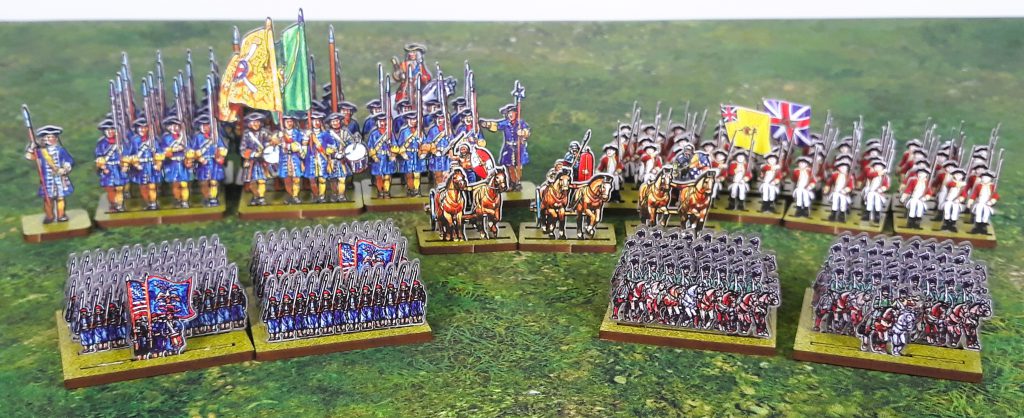
The package was delivered very fast indeed, and arrived nicely packaged in a sturdy cardboard box. Sprues are nestled in a bed of foam sheets and look crisp and clean. Even on sprue they look nice! I didn’t take a pic of the box itself because we’re not that kind of review site, but it wo ‘t look out of place on your shelf with the lid and the WoFun logo printed on a black background.
The kits give you an idea on what sort of periods are available. In a broad stroke, well, nearly everything. There are models in different scales available from biblical times up to the late 1900s. Apart from the usual suspects, there are also options for the Spanish-Aztec war, Mongol invasion, and Maratha Empire. It can be hard to source miniatures for these, and this is an excellent way to game some less “popular” periods. Sengoku-era Japan doesn’t have a line yet, nor does the Three Kingdoms period, but at the rate these models are pushed out, there is plenty of room for larger conflicts that don’t have dedicated model ranges. The Wild West range stands out as there are plenty of models that can be used in skirmish games. If you want to get a running start with What A Cowboy for example, a single kit will sort that out. There are also plenty of naval models if that scratches your wargaming itch. All the ranges are based on battles, and come in packs for these as well. So far the naval offering extends from Lepanto through the Spanish Armada, closely followed by Trafalgar, ending up in 1905 with the Battle of Tsushima. As with all ranges, smaller packs can be bought so you expand to massive fleet battles or keep it simple with a handful of ships per side. A friendly commenter reminded me that there is also a fantasy range available in 18-28mm. Since I have historicals on the brain, I overlooked this! If you want to add some wildlife to your games you can find some models in that range as well.
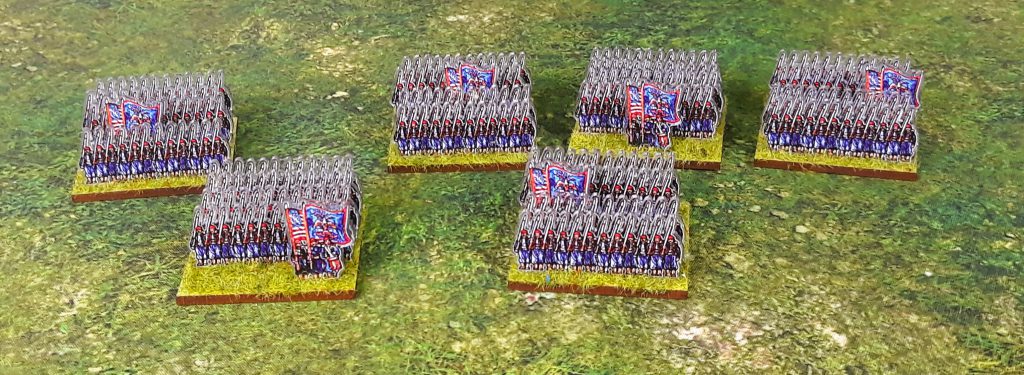
Flatpack Gaming
Assembling the models is as straightforward as you think. The models are cut in a way that you won’t need any tools to pop them out of the sprue, although you have to be careful with the flags when removing them. If you’ve opted for a pack of bases, you gently work them in and that’s it! You won’t need glue. In 15 minutes I assembled the WSS starter pack and I was ready to go. Storing the models can be done by removing them from the bases and snapping them back in the sprue. I wouldn’t recommend it for weekly club use, but it’s certainly an option if you’re busy on another project or are in need of space. The plexiglass is sturdy and will stand up to some knocking about. I don’t foresee any snapped spears or bayonets unless I really try to abuse the models. The artillery models I received are made from MDF, and you will need to use some hobby powers to assemble them. They don’t look out of place but you may want to add some color to the barrels to blend them in a bit. Personally, these models score high on the Accidentally Dropping And Stepping On Models Index, as I’m cursed with a love of pikes and a clumsy disposition. They stood up fine to my totally planned and controlled tests.

When ordering a set, you have the option of adding bases. There are several types to choose from, and they look perfectly fine, made from MDF with a generic grass print. This makes it very easy to switch between systems that use a different base frontage as well, a nice perk. I would recommend basing or flocking them, as it elevates the models to another level. I used a fairly quick and easy dabbing with Mod Podge matt varnish and dunking in a tray of static grass. If you’re offended by this, don’t worry, that’s how we roll in this household. Even without adding extra things like tufts or flowers, the results look neat and blend in a bit better with the tabletop.

Scale and style
Let’s take a look at the different scales provided:
You’ve got 10mm, 18mm and 28 mm. Naval models are of a different scale of course, roughly 1:400 so the smallest ships will be about 5cm, and the larger models will get to a length of 10cm. The 10 mm range has mass battles written all over it and one pack will give you a unit with infantry of around 300 models, and cavalry clocks in at 200. This translates to a battalion (roughly, go easy in the comments there people) on a Napoleonics level. We’re looking at brigade scale level gaming with a 1: 1 representation here folks. Depending on the range you’re picking, the models are provided in strips or individual models. 10mm will be all in strips, which works at that scale and gives a cohesive look to the armies. In 10mm you can easily add unit designations on the bases, which can be handy if you’re going for a particularly large engagement.

The artwork is what knocks it out of the park for me. There’s several renowned artists who have lent their work or made some stunning depictions that bring the models to life. Most known will probably be Peter Dennis, who has made countless art pieces for Osprey Publishing, of which you should have a full shelf in your bookcase, if only to look at the pretty pictures. Peter has some experience with the 2D-fication of models, as he’s ran his paper models site since time immemorial. So even though the technique and material is new, there’s certainly a precedent for going 2D.
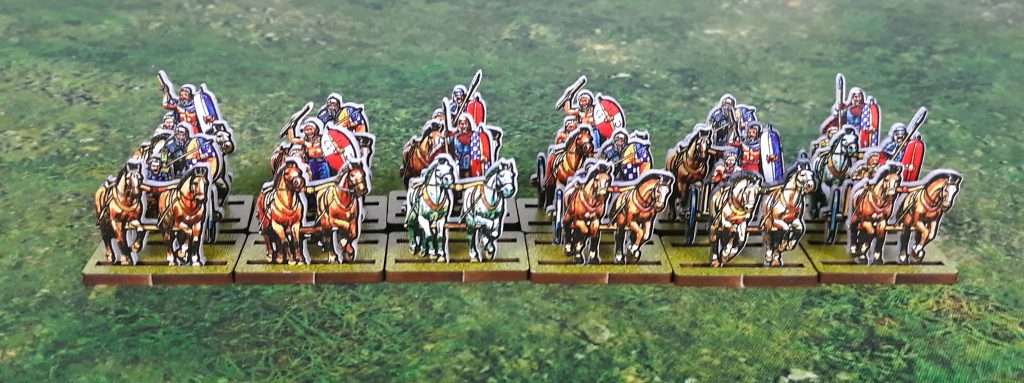
There is a certain nice quality to the crisp representation of the models. The 10mm range has a little edge of plexiglass which shows through. On the pictures you can see this edge as well on the larger scales, and you can technically color this in with a suitable grey or black aquarel penbrush, but you’ll lose the 3d effect as the light from the sides makes the models pop.
I think I’ve touched on keeping a certain style and theme to your battlefield in a previous article somewhere. You can carry on the 2D theme with an excellent set of scenery made from the same plexiglass, but you can easily use your existing scenery as it won’t clash. I would not recommend mixing these with other models, if just for the look of the thing.

Cost and Time
At the moment of writing, there’s a big sale going on with 25-30% off on the whole range. This is actually excellent to take advantage of, as these cheery packs are actually quite a bit cheaper than your classic models. I’ll do a little bit of a price breakdown, which is probably unfair, but we’re going to power through anyway.
For 10mm let’s look at a Magister Militum unit priced at £7,70 for 37 models. That’ll be about £0,20 per model. A £12 pack of WoFun 10mm is 107 models, or about £0,11 per model. If we’re looking at larger scales, that £13 will give you 48 models, or about £0,26 per model.
Why is this unfair? Well, obviously, it’s a different kind of material, and you don’t have to paint them. The monetary cost isn’t the only investment here.It is also called a hobby for a reason, and assembling and painting models is something which a fair amount of people do, without involving the gaming part. This will also be their objection to these products, as there simply isn’t that much hobbying to be done frankly.
The audience is firmly intended to be wargamers pur sang, who want to get on with it and play a damn game, finally. The impact for me personally felt quite liberating. I don’t have to feel bad about a backlog or piles of shame (I am that sort of person), and simply buying a complete army and trying out one of the myriad systems for the periods available is frankly exciting. This doesn’t mean I will chuck all my painting supplies in the ocean, joining thousands of car batteries, but it does relieve some of the pressure or slog of spending a lot of time getting an army ready. I think we’ve all had projects where some of the early enthusiasm about the game you want to play has faded by the time you get your army ready. If you’re looking at 20-25 mins painting time per model to get it table ready with a base color/wash/simple highlight, you’re looking at 50 hours to just paint (not base or prep) 150 models. Unless you can shut off work, social life, children and other projects that interfere, this will take weeks if not months. I’m working on about 300 rank and file guys on and off, and painting the same scheme over and over is not really how I like spending my hobby time.
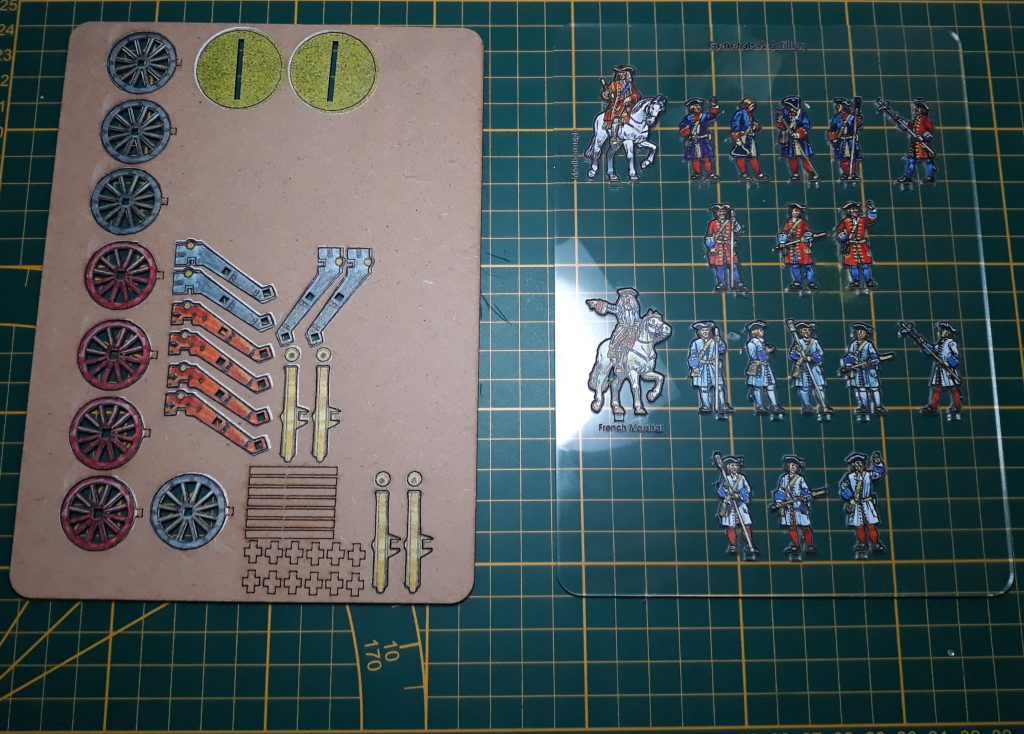
This is all subjective of course. But it is obvious that the appeal of simply starting a project for a period and getting games in immediately is very much a good thing. The fact that the buy-in is cheap for what you get makes this a very good line of products indeed. You will probably spend more time gaming with these kits than most other stuff you’ve worked on.
What a feeling
Keeping our train running on the subjective track, as you may have noticed while gaming, there is definitely something like a tactile feel to models. Metal, plastic, resin, they all have a certain presence on the tabletop. Not only in how they look, but also how they handle while maneuvering. Because the material WoFun uses is light, you might think that they would be too light or annoying to handle. It is actually pleasant handling them. The units have a certain heft to them that is, of course, lighter than a comparable plastic unit, but it very much feels the part of a unit. Mass battles being the primary use for these models, you can certainly fill a table that will look excellent and won’t look out of place at the club. I have to stress that the pictures I’ve taken for this review really don’t do the models justice. There is a vibrancy, depth, and 3D effect that doesn’t translate well to 2D photography, which is kind of ironic for these models, really.
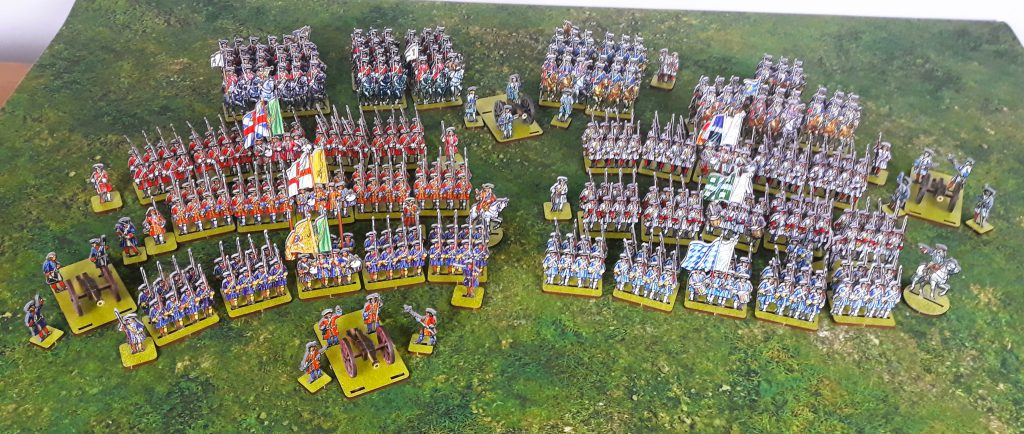
Getting started
Let’s get off our little subjective train which may or may not be nice depending on my mood, and stop at the station for practical things and ending the bit. The obvious place to start would be with the aptly named “starter packs”. For almost every period they provide two opposing sides, optional bases, and a ruleset written by Andy Callan of Never Mind The Billhooks fame. I think these rulesets are the same as used in Peter Dennis’s Paperboys range. WoFun adding these (you’ll get a digital copy) is a good way to get some quick games in. Expanding from the starter packs is pretty easy and the standard packs give you a lot of bang for your buck. If you’re deadly serious there are massive packs available which will set you up with almost every unit of the range and will give you plenty to choose from when picking out scenarios or specific battles. I wanted to do a specific example with the Billhooks ruleset on how to put together an army, but it would amount to “get the starter in the Wars of The Roses range”. All the starters are great for using with Osprey titles like Pikeman’s Lament or Lion Rampant as well, if you’re going for a larger skirmish style in 28mm. Since the 18mm range doubles the models you get, they can be used for games with a bigger scope.
Summing it up
I took some models along with me to the club, so I could get some impressions and feel out the waters on what other people’s thoughts are. The reactions were all positive, and possibilities for starting some period started cropping up. The reason I did this was simple: I can imagine some people thinking that this would be a love it or hate it kind of situation. 2D opposed to 3D, no painting or hobby time spent on a project, but the truth is a bit more nuanced than that. WoFun Games slots into a hole in the hobby that was not completely filled with paper armies. I make this distinction because making a paper army still entails a lot of work, and isn’t that readily usable out of the book. If we look at pre-painted armies that some companies have tried to market, they haven’t taken off like you would assume. Lacking paint jobs and price point are a problem here.

By taking the best of both worlds, WoFun models have made a line of products that can compete with tried and true manufacturers. It also lowers the barrier for grog and newcomer alike, letting you throw dice and play games in record time. In the near future, you can read an interview with game designer Piers Brand here. As he’s the one who lured me into the world of WoFun, I’ll add what he has to say on what he has been up to gaming wise lately:
Piers Brand: I want to get back to big mass battles! I don’t know why, but I’m a bit sick of skirmish games. I’ve relented and finally bought some Napoleonics, because Warwick wrote Soldiers Of Napoleon. I hated Napoleonic gaming with a passion before, because all the rules I’ve played I’ve hated, and then Warwick wrote the ruleset. And of course I played one game and I was like, “right I’m gonna go and buy some Napoleonics, this is amazing”. But I did it with the plexiglas flats from Wofun Games that use the Peter Dennis artwork. And man it’s opened my eyes up for periods where I don’t want to paint the stuff, but I want to play the game. They’re just amazing, it really gives the sense of a mass battle. I mean I’m 50 this year and there’s no way I’m gonna paint two and a half thousand napoleonics, I just can’t be bothered. So you have to cut your cloth as to what you can manage.
So for me it’s all about painting stuff that I actually want to paint, so that’s 20 mm World War II, or the old Warhammer fantasy stuff, or my 100 Years War medievals. I want to play, I don’t want to paint. WoFun has stepped into that, and to be honest, Lucian is such a nice guy and he goes out his way for his customers. I sent a message saying that I wanted more variety of standards for napoleonics, so he did me a whole sprue that was just different flags. Different little command elements with flags, so that I could mix up the flags and have all the units looking different. Nice little effort that he went to! It’s just another thing that adds to it and it’s quite fun for my barbarians as well. Peter Dennis painted lots of Druids and he did loads of weird little vignettes for the Paper Soldiers, and Lucian has done all those in Plexiglas. So I have little stands of druids sacrificing Roman soldiers and all those sort of weird crazy little things that you can do in miniature. It’s a nice little stress relief inside, you know you don’t have to model it all, I can order it.
Which about sums up this review. Pictures only do so much as opposed to handling the models yourself, and I can only recommend getting a pack if you’re in doubt. I think WoFun have delivered an excellent product here that’ll get people playing periods they wouldn’t normally start, and I’m all for that.



You must be logged in to post a comment.